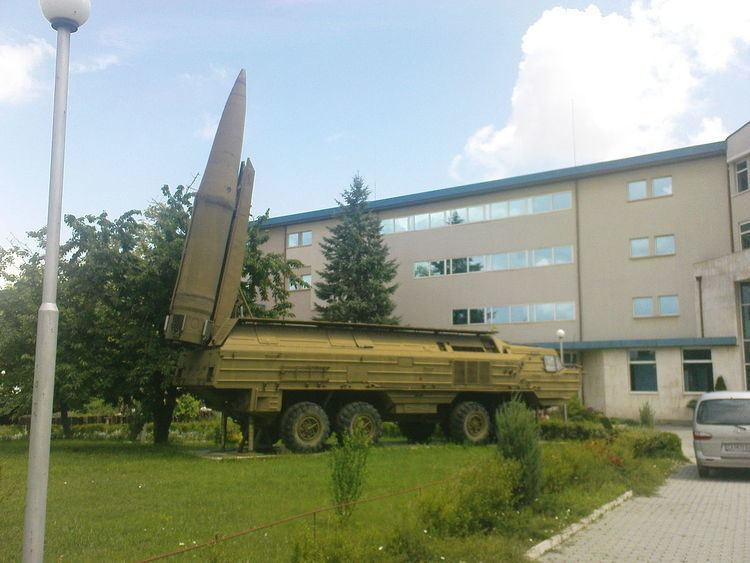Produced 1979 – 1987 | Used by See Operators | |
 | ||
Type Tactical ballistic missile Manufacturer | ||
The OTR-23 Oka (Russian: OTP-23 «Ока»; named after Oka River) was a mobile theatre ballistic missile (Russian: оперативно-тактический ракетный комплекс) deployed by the Soviet Union near the end of the Cold War to replace the obsolete SS-1C 'Scud B'. It carried the GRAU index 9K714 and was assigned the NATO reporting name SS-23 Spider. The introduction of the Oka significantly strengthened Soviet theatre nuclear capabilities as its range and accuracy allowed it not only to strike hardened NATO targets such as airfields, nuclear delivery systems, and command centers, but moving targets as well. It also had a fast reaction time, being able to fire in approximately five minutes, and was nearly impossible to intercept, thereby allowing it to penetrate defenses.
Contents
The main components of the 9K714 system were:
The operational life of the Oka was limited and controversial. The Soviet military asserted that the Oka only had a maximum range of 250 miles (400 km). American experts on the contrary estimated it had a greater range. In 1987, Mikhail Gorbachev proposed to George Shultz that he would unilaterally remove all Okas, if it would prevent the United States from building up its own short-range nuclear forces in Europe, despite the fact that the Soviet military was in favor of the Oka. Shultz however lacked the authority to act on the suggestion. Gorbachev included the Oka in the class of systems to be discontinued as part of the INF Treaty as a gesture of goodwill, even though Soviet assertions of its maximum range did not put it outside of the specifications of the treaty.
There was diplomatic controversy over this weapons system in April 1990 when the Soviets informed the US of their covert transfer of at least 120 missiles to the Warsaw Pact states of Czechoslovakia, Bulgaria, and East Germany during the time of negotiation of the Intermediate-Range Nuclear Forces Treaty. Evidence indicates that the missiles were transferred with conventional warheads only, although equipment to load Soviet nuclear warheads was apparently retained.
Missile Variants
In addition to these warheads, the SS-23 was also reported to be able to deliver chemical munitions.
